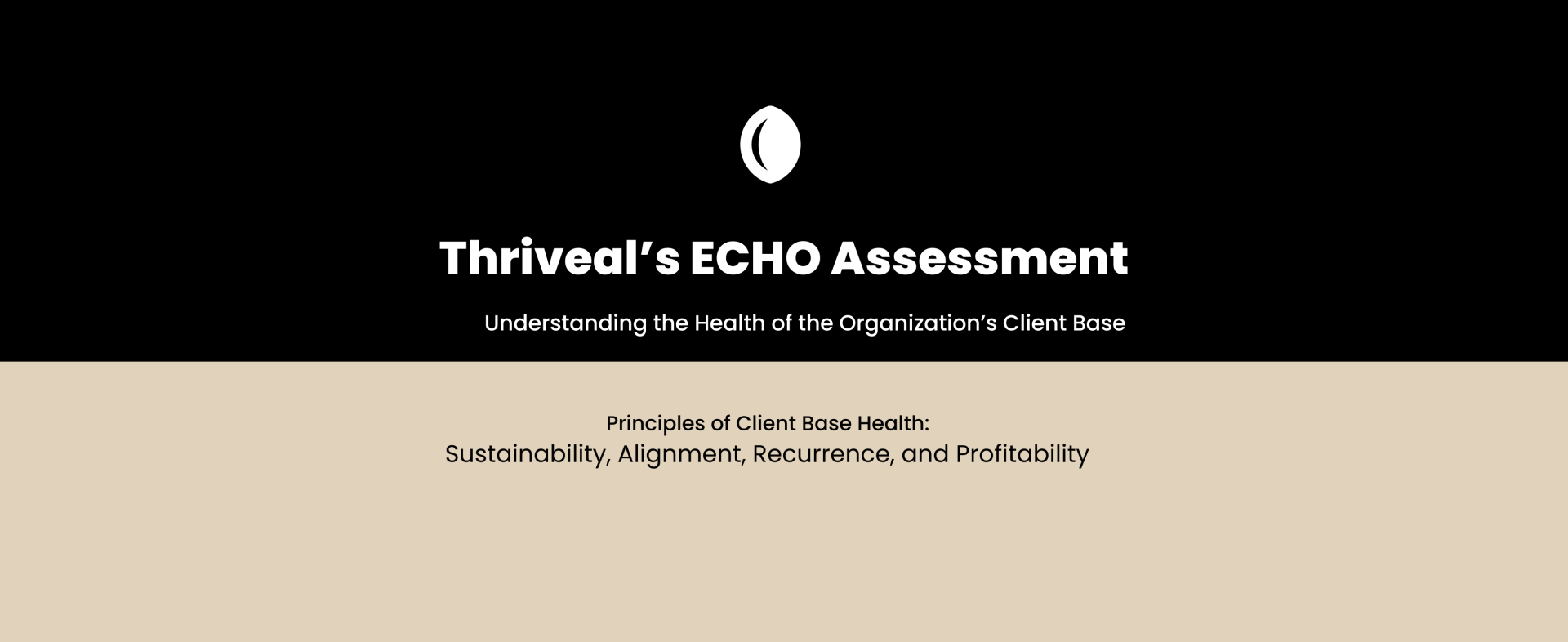| 1. Our firm conducts a formal review of our client base at least annually, with specific criteria for identifying clients with growth potential, and we have documented actions taken as a result of these reviews in the past 12 months. | | | | | |
| 2. At least 70% of our clients currently purchase services beyond basic compliance work, demonstrating their recognition of our higher-value expertise. | | | | | |
| 3. We conduct formal pricing reviews at least annually for all clients, and have increased prices for existing clients in the past 24 months. | | | | | |
| 4. At least 70 to 80% of our revenue comes from recurring service agreements rather than one-time projects, creating predictable monthly revenue. | | | | | |
| 5. Our Average Revenue Per Client (ARPC) has increased year-over-year for the past two consecutive years. | | | | | |
| 6. Clients regularly implement strategic recommendations our firm makes, beyond their core service engagement deliverables. | | | | | |
| 7. We track profit margins by service line, and each of our core service offerings achieves some target profit margin in support of our firm’s financial goals. | | | | | |
| 8. Our firm has a written Ideal Client Profile (ICP) with specific characteristics that we actively reference when considering new client opportunities. | | | | | |
| 9. Most of our service agreements are contracted as ongoing relationships (monthly, quarterly, or annual) rather than project-based engagements. | | | | | |
| 10. We track our client acquisition rate against our team’s available capacity to see if we can accept or turn down clients based on our strategic criteria. | | | | | |
| 11. In the past 12 months, existing clients regularly add new services to their original engagement, representing revenue growth without new client acquisition. | | | | | |
| 12. Our clients regularly use the software platforms and follow the processes we recommend, allowing us to maintain our preferred service model that supports our firm’s growth. | | | | | |
| 13. Our client onboarding process includes distinct steps (e.g., discovery call, value conversation, service agreement) that effectively screen for client-firm alignment before accepting new clients. | | | | | |
| 14. We have a documented communication calendar that ensures each client receives proactive, non-deliverable related touchpoints from the team throughout the year. | | | | | |
| 15. We have a formal system for grading clients (e.g. A, B, C, D) based on specific alignment criteria that our team and leaders give input into, at least annually. | | | | | |
| 16. Our largest client represents less than 20% of our total revenue, and no more than 40% of our revenue comes from our top 5 clients combined. | | | | | |
| 17. Our client retention rate for A and B clients is actively reviewed (at least annually) while we have strategies to improve or transition out our firm’s C and D clients over time. | | | | | |
| 18. We track actual revenue against standard billing rates or standard fixed fees for all client engagements in the firm to ensure we are not underpricing. | | | | | |
| 19. For out-of-scope requests, we have a documented process for issuing change orders and addendums, and making sure we charge for additional services. | | | | | |
| 20. Most of our clients consistently provide requested information within agreed-upon timeframes and actively engage in scheduled meetings and planning sessions. | | | | | |
